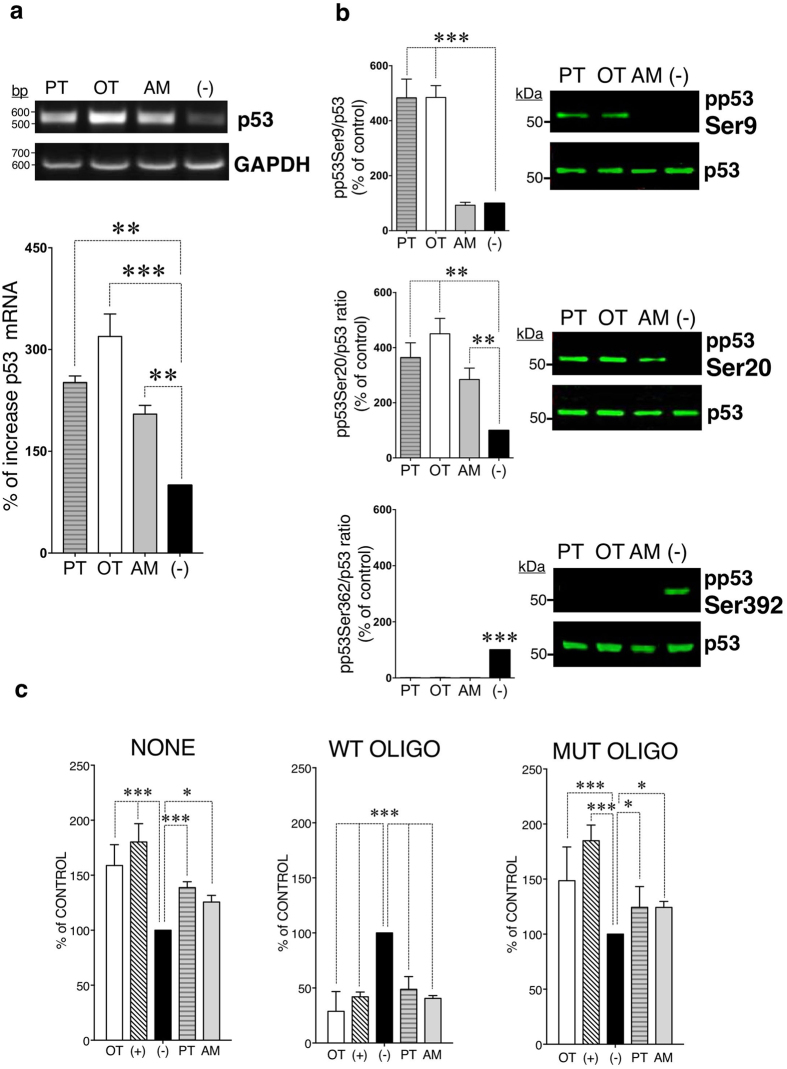Figure 1.
Effects of PT, OT and AM on the p53 gene expression, posttranslational modification and DNA-binding activity. Differentiated SH-SY5Y cells were treated with 100 μM PT, OT and AM. (a) p53 gene expression were determined by RT–PCR, normalized to GAPDH levels and mean ± SEM values (n = 3) were expressed as a percentage of the response to non-treated cells (−). (b) Western blots of phosphorylated p53 and total p53 were stained by appropriate antibodies. Data were normalized to total p53 and mean ± SEM values (n = 3) were expressed as a percentage of the response to non-treated cells (−). (c) The DNA-activity of p53 was determined by TransAM p53-DNA kit using nuclear extracts from cells treated with PT, OT, AM (NONE). Competitive binding experiments were performed by capturing of active p53 in nuclear extracts by wild type (WT OLIGO) or mutated oligonucleotide (MUT OLIGO) prior the binding assay. Non-treated cells were examined as negative control (−). MCF-7 nuclear cell extract treated with H2O2, provided with the TransAM kit, was used as a positive control (+). Data were calculated as percent of non-treated cells where the mean of its value was set to 100% (n = 3). Statistical analyses were performed using One way ANOVA (a,b) and Two-way RM ANOVA (c) followed by Bonferonni post-testing (*P < 0.05, **P < 0.01, ***P < 0.001).

